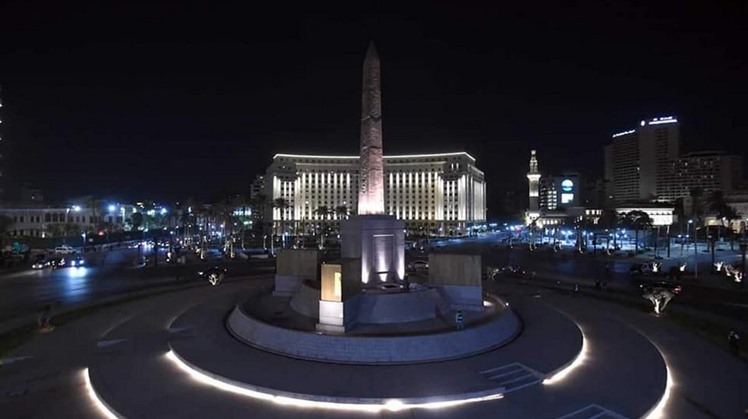Tahrir Square has become in its best image since its inception many decades ago, by developing the field and dyeing it in a Pharaonic spirit that expresses the ancient past of the country and our Pharaonic civilization, so that the beating heart of Cairo becomes like an open world museum befitting Egypt and its ancient civilization, after the modern history and the Pharaonic civilization were mixed, The cover revealed the Pharaonic obelisk and the four rams in the field tray, in addition to the increase and development of green spaces.
The Khedive Ismail was fond of the French capital Paris and even wanted to plan Cairo like Paris, and create a square similar to the Champs-Elysees Square, and indeed the Khedive Cairo, whose streets converge in a wide square, was named Ismailia Square after Khedive Ismail, whose name became Tahrir Square.
The field development included the installation and restoration of the obelisk of King Ramses II, as it was moved from the ancient San Hajar area in Sharqiya, which was divided into several parts. It reached a complete height after its assembly of about 19 meters, and weighed nearly 90 tons. It was carved from Pink granite stone, which depicts King Ramses II standing in front of one of the gods, in addition to his various titles.
The presence of the obelisk is a sign of immortality and ambition, and the presence of rams next to it makes a wonderful scene, where the rams indicate strength, stressing that the new shape of the square creates a visual identity that must be used in promoting the Egyptian tourist destination in various campaigns promoting Egypt, and in the heart of it is the capital, Cairo, as a facade tourism.
Many likened the shape of the square after its development to the Place de la Concorde in the heart of the French capital, "Paris", as it became the most famous square in Cairo much like the square in the heart of Paris.
The "Concorde" is located in the heart of Paris at the end of the Champs-Elysees Street from its eastern side, where a huge Egyptian obelisk adorns it. The French made great efforts to uncover the secrets of ancient Egyptian civilization, and Egypt gifted France two obelisks of King Ramses II in the Luxor Temple.
The square was designed by Jacques Ange Gabriel in 1755. Originally the square was called "Place de Louis XV" and there was a statue of him in it, and after the revolution and the transformation of France into a republic of moving the statue, he called the square "Revolution Square" and Louis XVI was executed in it on January 21, 1793 Which is similar to Tahrir Square, which witnessed the January 25 and June 30 revolutions, and became known as Revolution Square since then.
Today, Concorde Square is considered the heart of the center of the French capital, and it includes many shops as well as restaurants, cafes and souvenir stores where tourists can obtain souvenir models and pictures of many of Paris' landmarks.
 Sun, Dec. 6, 2020
Sun, Dec. 6, 2020